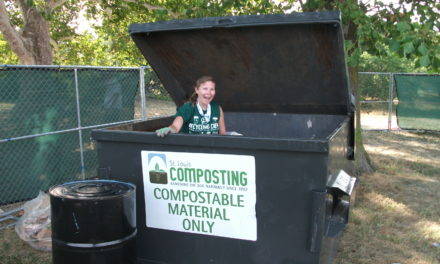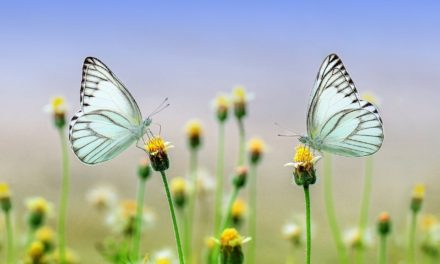#1. Burdock
Scientific Name: Arctium minus, Arctium lappa
Abundance: Rare
What: Young leaves, flower stalks, 1st year root
How: young leaves raw, as tea, stir-fried, or boiled in 2-3 changes of water; peel green skin of plant stalks to reveal inner white core which is eaten raw or cooked; root of 1st-year plants less than 1” in diameter and must be peeled then boiled in two changes of water until tender; roasted roots for coffee
Where: Open fields, sunny areas, woods
When: Leaves in spring, flower stalks in summer, roots summer and fall
Nutritional Value: Roots contain some minerals, vitamins C & B6, and some calories. Leaves contain many vitamins and phytochemicals
Other uses: you can stick a bunch of the burrs together to make a crown, but that usually ends badly
Dangers: burrs are clingy, do not confuse with toxic Cocklebur (Xanthium pennsylvanicum)
#2. Dandelion
Scientific Name: Taraxacum officinale
Abundance: Common
What: Leaves, flowers, roots
How: Young leaves in salad or boiled; flowers are used in wine; roots are roasted to make a coffee substitute or boiled for twenty-thirty minutes before eating
Where: Yards, sunny areas
When: Spring, early summer
Nutritional Value: Vitamins A, B, thiamine, riboflavin, minerals, and protein
#3 Arrowhead
Scientific Name(s): Maranta spp. and Sagittaria spp.
Abundance: Uncommon
What: Tubers, young leaves, young flower stalks
How: Boiled, roasted
Where: Marshes, water
When: Tubers all year, best in late fall and early winter; young leaves in early summer; flower stalks well before flower buds have opened.
Nutritional Value: Carbohydrates
Dangers: Beware the similar-looking arrow arum, (Peltandra virginica) plant which has an arrowhead-shaped leaf and produces tubers same as Sagittaria species.
#4. Turkey Tail Mushrooms
Scientific Name(s): Trametes versicolor, also called Coriolus versicolor
Abundance: common
What: Mushroom
How: Tea, tincture
Where: Dead trees
When: Spring, summer, fall, winter
Nutritional Value: Medicinal
Dangers: Beware of mimic False Turkey Tail crust mushroom (Stereum ostrea) and Gilled Polypore (Tremetes betulina)
#5 Maple
Scientific Name: Acer spp.
Abundance: Common
What: Inner bark, seeds, leaves, sap
How: Boil inner bark or dry into flour, cook seeds, young leaves raw or cooked, boil sap down to syrup
Where: Everywhere
When: Anytime
Nutritional Value: Sugar in sap, protein and carbohydrates in seeds, minerals in leaves, carbohydrates in inner bark.
#6 Stinging Nettle
Scientific Name: Urtica chamaedryoides, U. dioica, U. urens
Abundance: Common
What: Leaves and young stems
How: Cooked greens, tea
Where: Woods, borders, abandoned areas, woods, sunny and shady areas
When: Spring, early summer
Nutritional Value: Rich in vitamins A,C,D,K, minerals, and high in protein.
Dangers: can cause skin irritations, handle while wearing leather gloves. Cook to remove stingers before consuming.
#7 Wild Violet
Scientific Name: Viola species
Abundance: Uncommon
What: Leaves, flowers
How: Leaves and flowers raw (great in salads), tea from flowers
Where: Small, heart-shaped flowers in shady, moist areas
When: Winter (in Houston), Spring, early summer
Nutritional Value: Very rich in vitamin A,C
Dangers: Violets contain the chemical Violine which, in VERY large doses, can cause vomiting and diarrhea.
#8 Plantain
Scientific Name: Plantago species
Abundance: Plentiful
What: Leaves, young seed pods
How: Raw, steamed
Where: Sunny fields, urban yards
When: Spring
Nutritional Value: Minerals, vitamin B
Other uses: Rub mashed leaves on insect bites to relieve pain/itching
#9 Cattails
Scientific Name: Typha latifolia
Abundance: Common
What: Tubers, shoots, male portion of flower, pollen
How: Tuber starch granules are removed by hand from fibers, young shoots cut from tubers, older stems can be peeled back to get soft, white edible pith, male (top) part of flower steamed before it become fluffy, pollen from male section is shaken into paper bag from flower and use as flour
Where: Shallow water
When: Tubers in winter, shoots in spring/summer, pollen and flowers in spring
Nutritional Value: Young shoots have low amounts of minerals. Pollen is high in protein. Tubers are high in calcium, iron, potassium, and carbohydrates.
Other Uses: Fluff is good tinder and insulation, leaves can be woven into baskets and used to thatch huts.
Dangers: Fluff may cause skin irritation. Wash thoroughly before eating parts raw so as to avoid picking up any infectious, water-borne microbes.
#10 Prickly Pear Cactus
Scientific Name: Opunita lindheimeri
Abundance: Plentiful
What: Fruit (tunas), pads (nopalito), flowers, juice
How: Peeled pads can be pickled, fried, made into jerky; fruit can be raw or blended into a smoothy/icee drink; juice from strained fruit can be drunk, made into ice cream, mixed drinks, preserves.
Where: Sunny fields
When: Fruit-late summer, pads-all year though younger pads taste better.
Nutritional Value: Vitamin C, some minerals and omega-3 fatty acid
Dangers: The spines and tiny, fine hairs are very irritating and can even be fatal if lodged in the throat. Burn off the spines/hairs to remove.
#11 Willow
Scientific name: Salix spp.
Abundance: Plentiful
What: Twigs, inner bark
How: Tea made from chopped up twigs; inner bark is an emergency food and is eaten raw or dried and ground into flour
Where: Woods, water, sunny fields, landscaping
When: Twigs highest in salicylic acid in early spring; inner bark any time
Nutritional Value: Inner bark contains carbohydrates
Other uses: Willows contain salicylic acid which is a precursor of aspirin.
Dangers: Salicylic acid can cause stomach upset in high doses and trigger Reye’s syndrome in young children.












